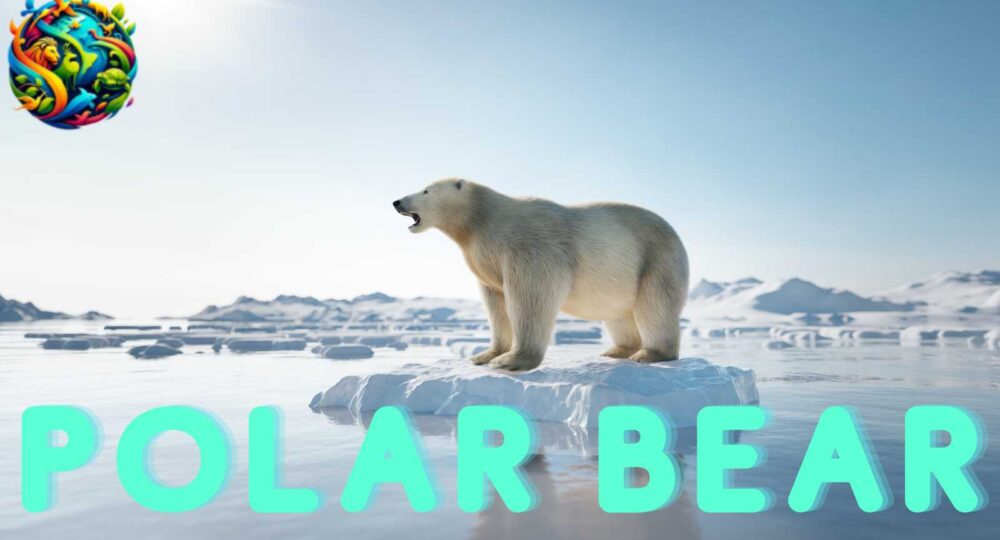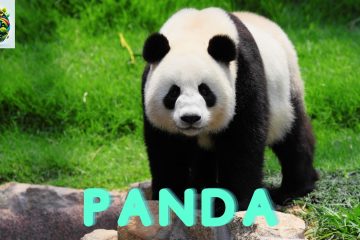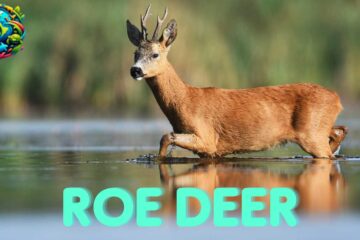
Polar Bear: Marvellous Predator of the Arctic Wilderness
Polar Bear: Marvellous Predator of the Arctic Wilderness
Introduction
The Arctic’s majestic apex predator, known for its powerful presence and remarkable adaptations to extreme environments, commands both fear and respect. As the largest land carnivore, it plays a crucial role in its ecosystem. These magnificent creatures are not only symbols of the Arctic wilderness but also indicators of the impacts of climate change. This article delves into the fascinating world of these arctic giants, exploring their habitats, physical characteristics, behaviors, and much more.
Amazing Facts
Polar bear is a creature of extraordinary attributes:
- Size: They are the largest land carnivores, with males weighing between 900 to 1,600 pounds (410 to 720 kg) and females weighing between 330 to 550 pounds (150 to 250 kg).
- Adaptations: They have evolved numerous adaptations for survival in the harsh Arctic environment, including thick blubber, dense fur, and large paws for swimming and walking on ice.
- Diet: Their primary diet consists of seals, particularly ringed and bearded seals, which they hunt using their acute sense of smell and remarkable patience.
- Swimming Abilities: These predators are excellent swimmers, capable of swimming for days at a time and covering distances of over 60 miles (100 km) in search of food or habitat.
- Longevity: In the wild, they can live up to 25 years, a relatively long life for a predator.
- Conservation Status: They are classified as vulnerable by the International Union for Conservation of Nature (IUCN), primarily due to the loss of their sea ice habitat caused by climate change.
Habitat and Food
Highly adapted to the Arctic environment, Polar bear play a key role as apex predators. Their diet and hunting techniques reflect their specialization in this unique ecosystem.
Habitat:
- Polar bear are found throughout the Arctic region, including the Arctic Ocean, its surrounding seas, and surrounding landmasses.
- They prefer areas with sea ice, which they use as a platform to hunt seals and other marine mammals.
- During the summer, when sea ice retreats, these animals may be found on land, where they rely on stored fat reserves until the ice returns.
Food:
- These predators primarily feed on seals, particularly ringed and bearded seals, which they hunt by waiting near breathing holes or breaking into seal dens.
- They occasionally eat other marine mammals such as walruses and beluga whales, as well as birds, bird eggs, and fish.
- In times of scarcity, Polar bear may scavenge carcasses or consume vegetation, though this is not their preferred diet.
Appearance
These arctic giants are known for their striking appearance, which is both functional and beautiful. Key characteristics include:
- Color: Polar bear fur appears white but is actually translucent, providing camouflage in the snow and ice. Underneath, their skin is black, helping them absorb and retain heat.
- Size: Adult males typically weigh between 900 to 1,600 pounds (410 to 720 kg) and measure 8 to 10 feet (2.4 to 3 meters) in length. Females are smaller, weighing between 330 to 550 pounds (150 to 250 kg).
- Fur and Blubber: They have a thick layer of blubber and dense fur to insulate against the extreme cold.
- Paws: Large, powerful paws with non-retractable claws help them walk on ice, swim, and catch prey. The paws also have small bumps (papillae) and rough surfaces to prevent slipping on ice.
- Head: These animals have a long neck and narrow skull, which are adaptations for hunting seals in the water.
Types/Subspecies
While generally considered a single species, Ursus maritimus, without recognized subspecies, these predators inhabit various regions across the Arctic, with some variations in behavior and physical characteristics influenced by their specific environments.
Predators and Threats
As apex predators, Polar bear face significant natural and human-induced threats that impact their survival.
Natural Predators:
- Humans: Historically, humans have hunted these animals for their fur, meat, and other body parts. Modern regulations and conservation efforts have reduced this threat, but it still exists in some regions.
- Other Bears: Occasionally, adult males may prey on cubs or weak individuals.
Threats:
- Climate Change: The greatest threat to these animals is the loss of sea ice habitat due to global warming, which affects their ability to hunt seals and find suitable denning sites.
- Pollution: Contaminants such as heavy metals and persistent organic pollutants accumulate in the Arctic food web and can impact their health.
- Oil and Gas Exploration: Industrial activities in the Arctic pose risks of habitat disturbance and oil spills, which can be catastrophic for these animals.
- Human-Bear Conflicts: As they spend more time on land due to reduced sea ice, they may come into closer contact with humans, leading to potential conflicts.
Mating
Polar bear exhibit unique and complex mating behaviors, essential for the continuation of their species.
- Breeding Season: Mating typically occurs from March to May, with implantation of the fertilized egg delayed until the fall.
- Courtship: Males track females using their keen sense of smell and may fight other males for access to a receptive female.
- Gestation and Birth: After a delayed implantation, the gestation period lasts about 195 to 265 days. Pregnant females enter maternity dens in the fall, where they give birth to 1-3 cubs between November and January.
- Parental Care: Cubs are born blind and helpless, weighing around 1 pound (0.45 kg). They rely on their mother’s milk and protection until they leave the den in the spring. Cubs stay with their mother for about 2.5 years, learning essential survival skills.
How Polar bear Communicate
Polar bear use a variety of methods to communicate with each other, particularly between mothers and cubs and during mating season.
Vocalizations:
- Growls and Roars: Used to assert dominance or during aggressive encounters.
- Chuffing: A sound made by mothers to reassure their cubs.
- Whimpering: Cubs may whimper to solicit attention or care from their mothers.
Body Language:
- Posturing: These animals use body language to communicate aggression, submission, or playfulness. For example, lowering their head and extending their neck can signal submission.
- Touching and Nuzzling: Physical contact, such as nuzzling or patting, is common between mothers and cubs and can convey comfort and bonding.
Chemical Signals:
- Scent Marking: They use scent to mark their territory and communicate reproductive status. They have scent glands located in their paws and may leave scent trails as they walk.
Religious and Cultural Significance
Polar bear hold significant symbolic and cultural importance in various indigenous Arctic cultures and broader human society:
Indigenous Cultures:
- Inuit and Other Arctic Peoples: Polar bear are revered and respected in many indigenous Arctic cultures. They are seen as powerful and spiritual animals, often featured in myths and legends. They are also important for subsistence hunting and traditional practices.
- Shamanism: In some shamanistic traditions, they are believed to be spirit animals or totemic beings with protective and healing powers.
Modern Symbolism:
- Conservation Icon: Polar bear have become symbols of wildlife conservation and the impact of climate change. Their plight has garnered global attention, highlighting the need for environmental protection and sustainable practices.
- Commercial and Cultural Representation: They are often depicted in advertising, media, and popular culture, symbolizing strength, endurance, and the wild Arctic.
Movies Featuring Polar bear
Polar bear have been featured in various films and documentaries, showcasing their incredible abilities and the challenges they face in the Arctic:
- “To the Arctic” (2012): An IMAX documentary that follows a mother and her two cubs, highlighting the impact of climate change on their habitat.
- “The Golden Compass” (2007): A fantasy film featuring armored bears called panserbjørne, with the character Iorek Byrnison playing a significant role.
- “Arctic Tale” (2007): A documentary narrated by Queen Latifah that follows the lives of a cub and a walrus pup as they navigate the changing Arctic environment.
- “Planet Earth II” (2016): The “Frozen Worlds” episode features stunning footage of these predators in their natural habitat, showcasing their hunting techniques and interactions with cubs.
Pronunciation in Different Languages
The term for these arctic predators is pronounced differently across various languages, reflecting linguistic diversity:
- English: /ˈpoʊlər bɛər/
- Spanish: /oso polar/
- French: /ours polaire/
- German: /Eisbär/
- Italian: /orso polare/
- Mandarin Chinese: /北极熊 (běijíxióng)/
- Japanese: /ホッキョクグマ (hokkyokuguma)/
- Russian: /белый медведь (belyy medved)/
- Arabic: /الدب القطبي (al-dubb al-qatbi)/
- Hindi: /ध्रुवीय भालू (dhruvīya bhālū)/
FAQs
Q: Why are Polar bear considered apex predators? A: They are considered apex predators because they are at the top of the Arctic food chain, primarily hunting seals and having no natural predators.
Q: Where do these animals live? A: They inhabit the Arctic region, including the Arctic Ocean, its surrounding seas, and adjacent landmasses. They prefer areas with sea ice for hunting seals.
Q: What do these predators eat? A: These predators primarily eat seals, particularly ringed and bearded seals. They may also consume other marine mammals, birds, bird eggs, fish, and vegetation when available.
Q: How do these animals communicate? A: They communicate through vocalizations, body language, and chemical signals. They use growls, roars, chuffing, and scent marking to convey different messages.
Q: Are these animals endangered? A: These predators are classified as vulnerable by the IUCN due to the loss of their sea ice habitat caused by climate change. Conservation efforts are essential to protect their populations.
These majestic Arctic creatures symbolize the beauty and resilience of the wilderness, playing a vital role in its ecosystem and human culture. This exploration highlights their unique traits and behaviors, celebrating the majesty and complexity of these remarkable animals
This Article is Sponsored by FINCTOP & TECHETOP






